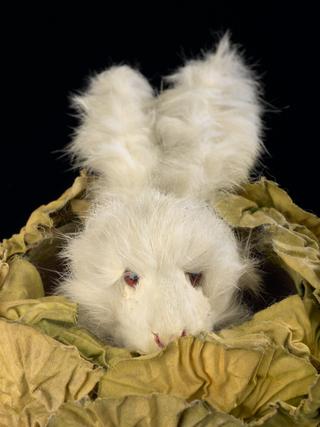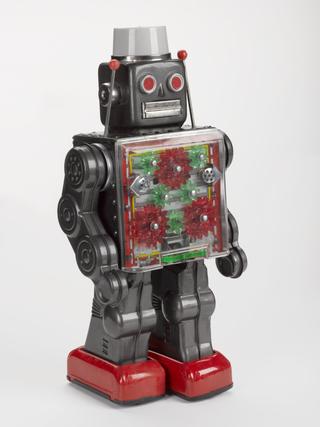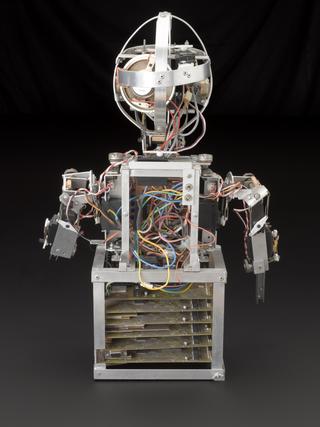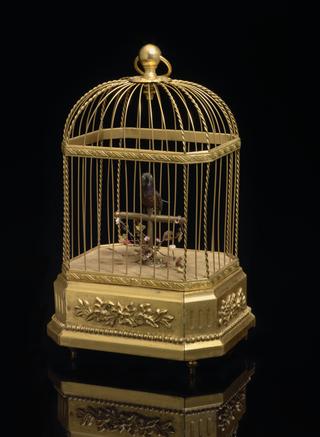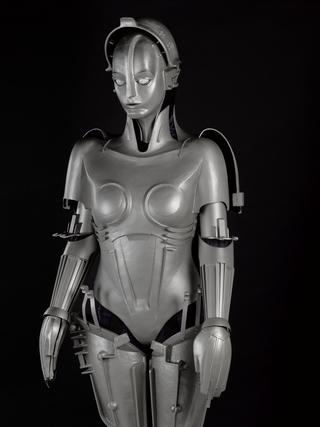Electric Actor 2 (with spring arms)
Electric Actor 2 (with spring arms), made by Bruce Lacey, British, 1962
More
The Electric Actors were constructed by Bruce Lacey, whose National Service with the RAF gave him a thorough grounding in electronics and radio technology, which set him up for a long career in performance art . exemplifies an approach to robots which takes them outside the formal scientific laboratory into the wider, unpredictable world inhabited by humans. The first outing for his robots was at Peter Cook’s Establishment Club, in early 1962. Lacey was annoyed with the ‘routines and conventions associated with professional stage actors (in much the same way that the modern Robothespian humanoid was designed to replace human actors, who are very expensive but just do some quite simple things repetitively), so he built his two ‘electric actors’, ‘shocking machines’ which ‘moved and spoke like the perennial modernist notion of the robot’, according to DA Mellors’ account of them. The robots would be controlled by Bruce, who would feign a heart attack during the performance, collapsing dead but still controlling the robots so that they completed their set without him.
